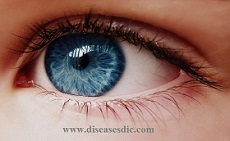Definition
An eye twitch is an involuntary spasm of the muscles in the eyelid. Blepharospasm is the medical term for eyelid twitching. Eyelid twitching usually occurs every few seconds and lasts for a few minutes. It may come and go over a period of days or weeks. Sometimes the twitching results in the eye being held closed until the movement stops, but this is not always the case.
Eye twitching
In most cases of eyelid twitching, no identifiable cause can be found. However, certain environmental and behavioral factors may worsen eyelid twitching, such as caffeine consumption, stress, and smoking. Eyelid twitching may also accompany irritations or infections of the eye. In rare cases, eyelid twitching, usually when accompanied by other disordered movements, can be a symptom of a chronic neuromuscular disorder such as Tourette’s syndrome.
Risk factors of eye twitching
Essential blepharospasm usually occurs more commonly in females and at a later age.
Causes
Stress: While we’re all under stress at times, our bodies react in different ways. A twitching eye can be one sign of stress, especially when it is related to vision problems such as eye strain.
Tiredness: A lack of sleep, whether because of stress or some other reason, can trigger a twitching eyelid. Catching up on your sleep can help.
Eye strain: Vision-related stress can occur if, for instance, you need glasses or a change of glasses. Even minor vision problems can make your eyes work too hard, triggering eyelid twitching. Schedule an eye exam and have your vision checked and your eyeglass prescription updated.
Computer eye strain: From overuse of computers, tablets and smartphones also is a common cause of eyelid twitching. Follow the “20-20-20 rule” when using digital devices: Every 20 minutes, look away from your screen and allow your eyes to focus on a distant object (at least 20 feet away) for 20 seconds or longer. This reduces eye muscle fatigue that may trigger eyelid twitching.
Caffeine: Too much caffeine can trigger eye twitching. Try cutting back on coffee, tea, chocolate and soft drinks (or switch to decaffeinated versions) for a week or two and see if your eye twitching disappears.
Alcohol: Try abstaining for a while, since alcohol also can cause eyelids to twitch.
Symptoms
Symptoms of eyelid twitches may include:
- Excessive blinking of the eyes
- Involuntary muscle movement around eyes
- Dryness of eyes
- Light sensitivity
- Tired eyes
Complications of eye twitching
Very rarely, eyelid spasms are a symptom of a more serious brain or nerve disorder. When the eyelid twitches are a result of these more serious conditions, they are almost always accompanied by other symptoms. Brain and nerve disorders that may cause eyelid twitches include:
- Bell’s palsy (facial palsy), which is a condition that causes one side of your face to droop downward
- dystonia, which causes unexpected muscle spasms and the affected area’s body part to twist or contort
- cervical dystonia (spasmodic torticollis), which causes the neck to randomly spasm and the head to twist into uncomfortable positions
- multiple sclerosis (MS), which is a disease of the central nervous system that causes cognitive and movement problems, as well as fatigue
- Parkinson’s disease, which can cause trembling limbs, muscle stiffness, balance problems, and difficulty speaking
- Tourette’s syndrome, which is characterized by involuntary movement and verbal tics
Undiagnosed corneal scratches can also cause eyelid twitches. If you think you have an eye injury, see your optometrist or ophthalmologist immediately. Corneal scratches can cause permanent eye damage.
Diagnosis and test
These conditions are distinguished by a careful clinical examination. Rarely, hemifacial spasm is caused by a tumors pressing on the facial nerve, found with MRI testing.
Treatment and medications
Most eyelid spasms go away without treatment in a few days or weeks. If they don’t go away, you can try to eliminate or decrease potential causes. The most common causes of eyelid twitch are stress, fatigue, and caffeine. To ease eye twitching, you might want to try the following:
- Drink less caffeine.
- Get adequate sleep.
- Keep your eye surfaces lubricated with over-the-counter artificial tears or eye drops.
- Apply a warm compress to your eyes when a spasm begins.
Botulinum toxin (Botox) injections are sometimes used to treat benign essential blepharospasm. Botox may ease severe spasms for a few months. However, as the effects of the injection wear off, you may need further injections.
More chronic forms of the condition can be treated in the following ways:
- Facial injections: Injections are administered to cause localized paralysis around the affected area. In most cases, the eyes are immediately responsive, and symptoms are relieved between injections. The typical administering schedule for injections is every three months but varies from patient to patient.
- Surgical removal of muscles around the eyelids: This method is only used in serious cases, for patients who do not respond to other forms of treatment.
Prevention of eye twitching
If your eyelid spasms are happening more frequently, keep a journal and note when they occur. Note your intake of caffeine, tobacco, and alcohol, as well as your level of stress and how much sleep you’ve been getting in the periods leading up to and during the eyelid twitching.
If you notice that you have more spasms when you aren’t getting enough sleep, try to go to bed 30 minutes to an hour earlier to help ease the strain on your eyelids and reduce your spasms.

